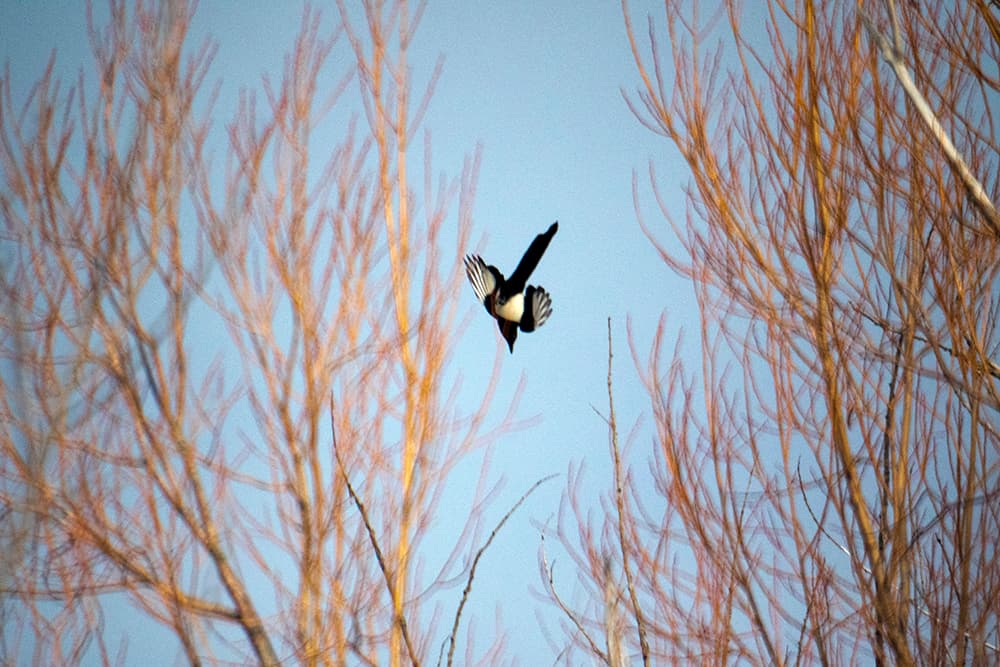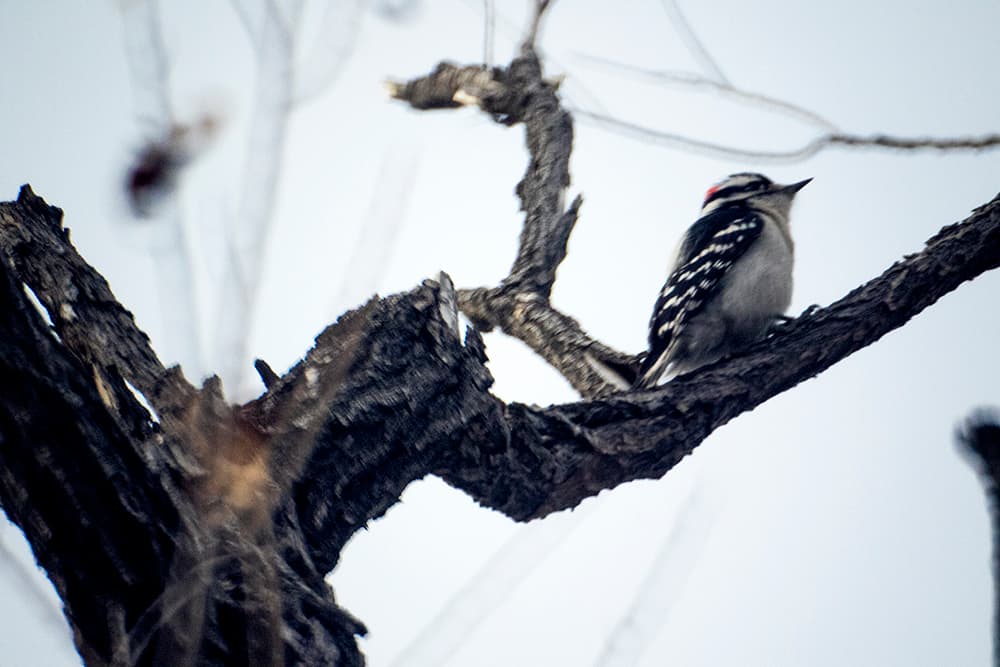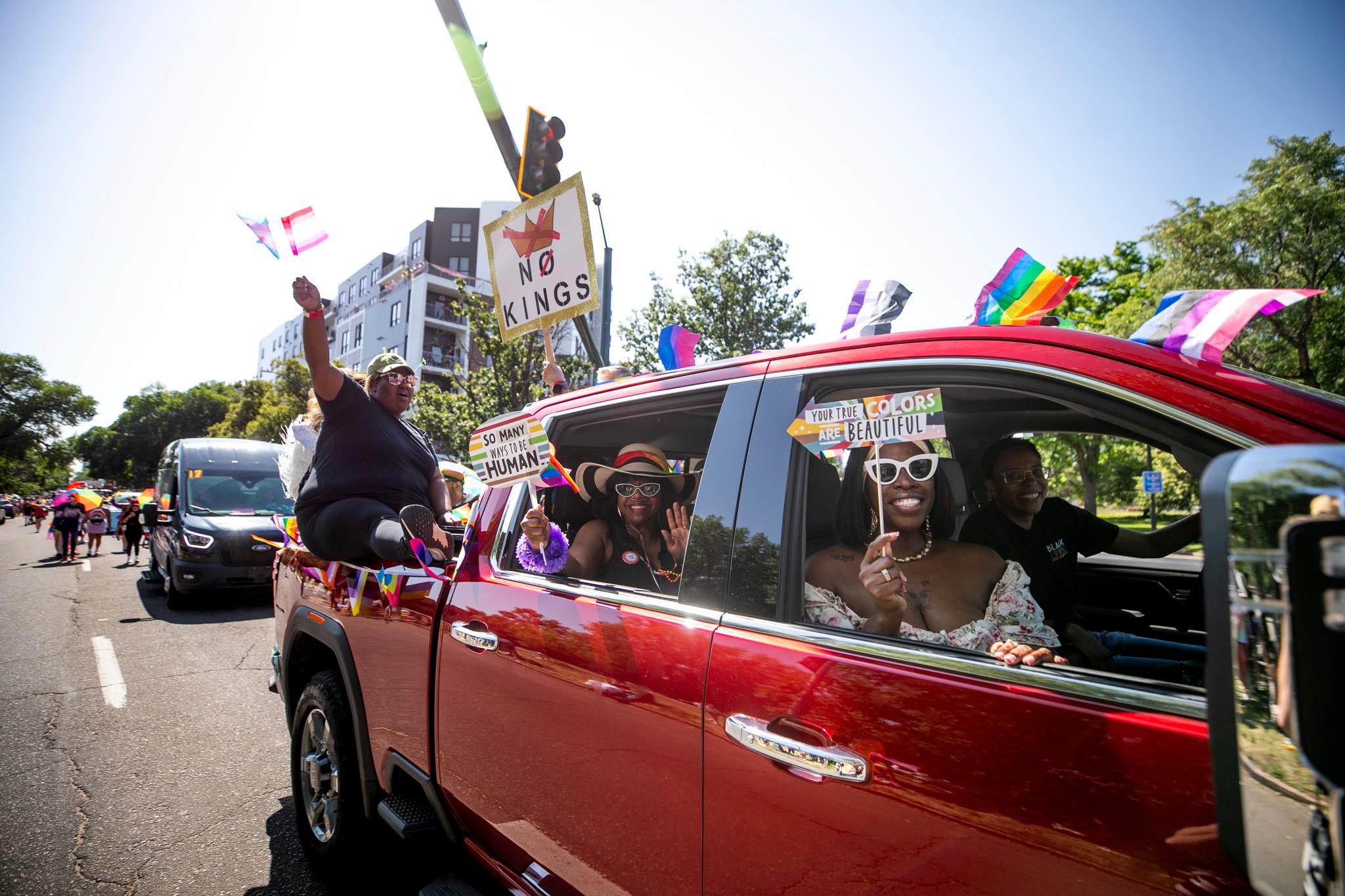
On a chilly Saturday morning at Chatfield State Park, Urling Kingery holds up an iPod and speaker that spews owl screeches into the trees. She and some fellow bird nerds stare into the distance in anticipation. Suddenly the branches around them are teeming with chickadees fooled into thinking they've located a predator. Kingery begins counting them out loud.
This is the National Audubon Society's Christmas Bird Count, a species tally that's been held across the northern hemisphere now for 118 years. Kingery and her team are responsible for counting every species they see on a single day inside a 15-mile circle in the south Denver metro area. She's been leading this count for more than three decades, one of the first to occur each year during a monthlong counting period. There are counts scheduled all over the state, including two more around Denver in January.
This annual tally is an exercise in citizen science that's more than a nice stomp through the woods. Counts throughout all of North America help researchers map how species are shifting northward in response to climate change. Long-term, experts say, global climate trends will push native species out of Colorado. In Denver, though, development has already upended the natural order.
Even though Kingery and her husband, Hugh, have been observing birds here for so long, she's careful not to make too many statements on how things have changed over the years.
"Your perceptions really don’t count for much," she says as the group splits up around the Chatfield Reservoir. "You really have to look at the records."

Even still, she's willing to make a few predictions.
There was a cold snap last spring, she says, that killed many of the buds and berries birds feed on this time of year. She's not expecting to see as many birds as a result. What's more, she says, it's just not as cold this December.
"The report just came in from Lamar, John Martin Reservoir, where every year they have huge numbers of snow geese and Canada geese," she says. "There were seven ducks on the whole reservoir. It hasn’t been cold."
It's extremely difficult to localize data on climate change on a year-to-year basis. But, over the scope of a century, citizen observers like Urling and her sharp-eyed companions have helped create a huge data repository that's allowed the Audubon Society to map where birds have been seen historically and model how they'll continue to move.

"One hundred years of data is incredible," Audubon Rockies Executive Director Alison Holloran tells Denverite. Holloran is one many Audubon advocates looking after the central flyway, a busy continental corridor for migrating birds. Climate change isn't coming, she says, it's already here. With the help of Christmas Count mapping, she's already seen migratory paths shifting.
Audubon's outlook for the lower 48 isn't great. While some species, like the bald eagle, won't lose too much ground between now and 2080, others, like the pygmy nuthatch, are projected to have virtually no habitable areas left.

As Kingery tells it, that pygmy nuthatch has made a particularly interesting appearance this year. As with other high mountain birds, it isn't often seen this far from alpine areas. But, she says, there's been quite a few sightings this season.
"Maybe there isn't food for them in the mountains," she ponders. "They're showing up, quantities of them in everybody's backyards."
Then again, she says, there could be other factors at play: We've planted a lot of conifers in Denver. Maybe the plains are a newly welcoming home.
It's not just climate change dictating which feathered friends feel at home here.
Dr. Garth Spellman is the curator of ornithology at the Denver Museum of Nature and Science and an expert on how birds change with their environments. The way Denver has reshaped its own landscape since the early 1900s, he says, has long determined which birds are comfortable here. The urban environment complicates Audubon's continental-scale look at species movement.
"One hundred years ago, City Park was an upland prairie," he told Denverite, once home to burrowing owls. Now it's full of grass -- and geese. The "local cattle," as he calls the geese, never would have been found living in Denver year-round a century ago.
"We have dramatically changed that landscape," he says. So the bird sightings have changed too.

Denver's Bird Count data, by the way, confirms this. Canada geese are as much as 40 times more likely to be spotted today then in the 1950s.
While some species do well in an urban area, others, like migratory birds, don't fare so well. And as native plant life is replaced with sod, native species are also replaced. Today, he says, Denver is home to a more diverse stock of birds, but their numbers are fewer overall.
Despite pressures associated with climate change, the National Audubon Society said in a 2015 report that development has been the "primary driver of population decline over the past century." It's one reason why the organization has listed Chatfield and the Rocky Mountain Arsenal as "important bird areas," places it says are crucial to species' wellbeing in the face of changes around them.
It's also why the Audubon Society of Greater Denver has sued the Army Corps of Engineers, which owns the Chatfield Reservoir, in an effort to stop a long-planned expansion that could raise the water there by 12 vertical feet. Urling Kingery and her bird-counting comrades are well aware of the impending construction as they make their way through trees marked with paint for removal.

With climate change on the horizon, preventing habitat loss in the short-term might not be enough to keep every species in Colorado on a longer time frame. Even so, Audubon Rockies' Holloran says it's a fight worth continuing.
"Birds are the canary in the coal mine," she says, "an indicator of our health" that we ought to keep around, even if the future looks a little bleak.


















